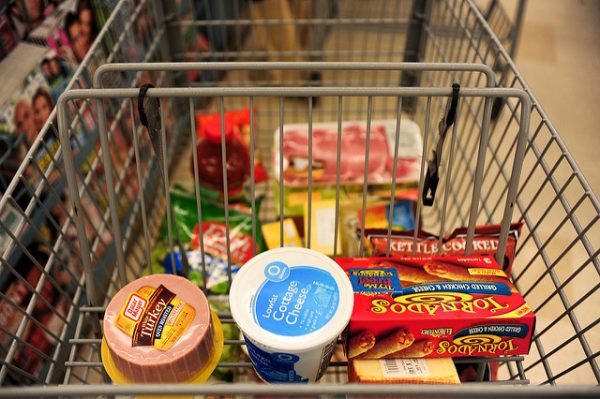How Much Should You Be Spending on Groceries? Ask the USDA

Photo credit: Eddie Welker, CC BY 2.0.
I love it when you all send me tips, and one of the recent tips was this article from Apartment Therapy:
[My friend and I] both felt like we were spending way too much on groceries for our families of four (sometimes upwards of $300 per week), and on top of that, felt like our cabinets were full and a lot of food went bad or leftovers went uneaten. We lamented that it was hard to calculate how much we should be spending on food.
Hahahaha, that’s practically a refrain here at The Billfold — to the point where y’all are getting tired of hearing it. Is there a definitive answer to this question?
Well it turns out, the USDA actually publishes average food prices for families every month.
Oh! Well… okay, then!
The Official USDA Food Plans, and yes I do recommend clicking that link and digging into them, are fascinating. The USDA has set a series of budgets that reflect how much it costs to feed people of various ages, depending on whether you want to be thrifty, low-cost, moderate-cost, or “liberal.” If this sounds a little Oregon Trail, it totally is — and if you want to see what kind of food makes up a thrifty plan vs. a liberal one, the USDA has even more documentation.
Here’s how much grain you should plan to buy for a 9-11 year old child, per week, on the thrifty food plan:
- 1.70 lbs of whole grain breads, rice, pasta, or pastries
- 0.07 lbs of whole grain cereals
- 0.00 lbs of popcorn and other grain snacks
- 0.76 lbs of non-whole grain breads, rice, pasta, pastries, cereals, or flours
If your family is on the liberal food plan, the numbers (and your food costs) go up slightly:
- 1.37 lbs of whole grain breads, rice, pasta, or pastries
- 0.07 lbs of whole grain cereals
- 0.46 lbs of popcorn and other grain snacks
- 1.46 lbs of non-whole grain breads, rice, pasta, pastries, cereals, or flours
If you do the math, the kid on the liberal food plan gets nearly a pound more grains than the kid on the thrifty food plan, but fewer whole grains overall. Which… I get that the thrifty food plan is trying to nudge people towards spending their food dollars on the most nutritious food, but I have a lot of questions about this methodology.
When you compare the full plans (and I did), it basically comes down to “thrifty people shouldn’t buy processed food or snacks.” Like, you’re not supposed to buy lunch meat or ice cream or frozen entrees on the thrifty plan, even though plenty of thrifty people buy all of those things (raise your hand if you also grew up on Carl Buddig “thin meat”).
Still. If you’re interested in comparing your monthly grocery budget against the USDA’s recommendations, follow those links and let us know what you learned. Remember to separate your food costs from your household/toiletry costs, or the numbers won’t come out right.
I spend around $230/month on food, which is slightly more than what’s recommended by the low-cost plan, but not enough to hit the moderate-cost plan. I rarely buy lunch meat or ice cream or frozen entrees, but I’m pretty sure the USDA wouldn’t approve of my paying $115 per month on Huel.
Support The Billfold
The Billfold continues to exist thanks to support from our readers. Help us continue to do our work by making a monthly pledge on Patreon or a one-time-only contribution through PayPal.
Comments